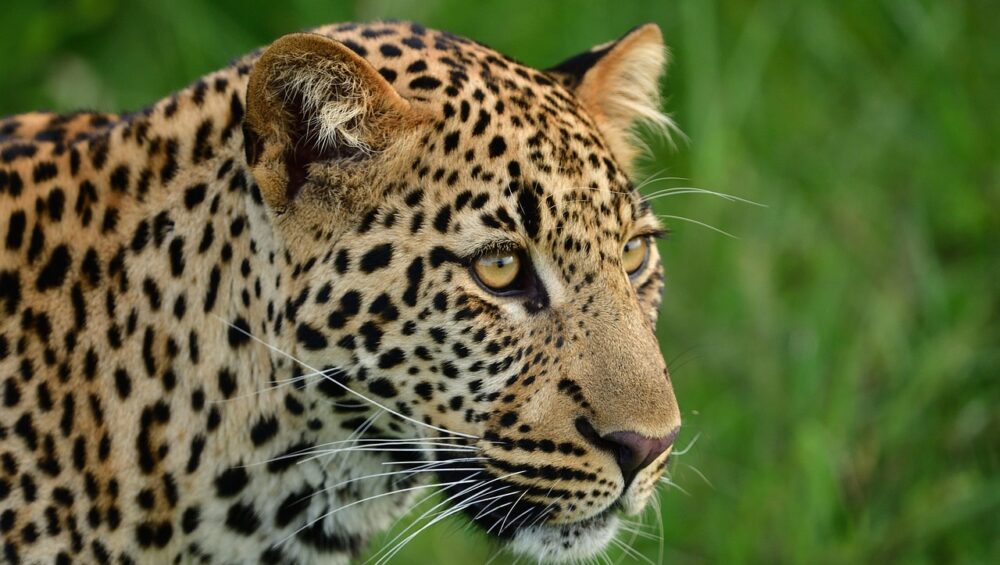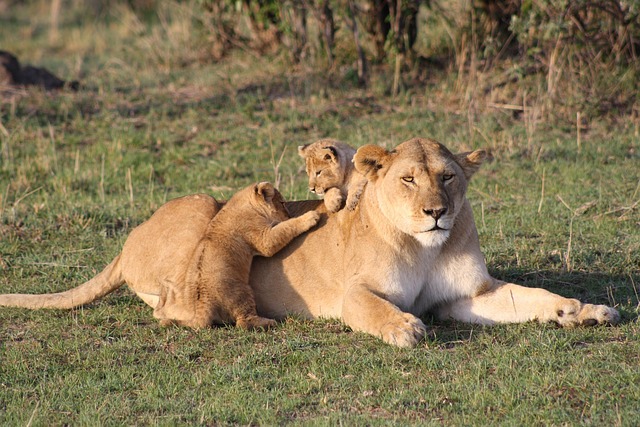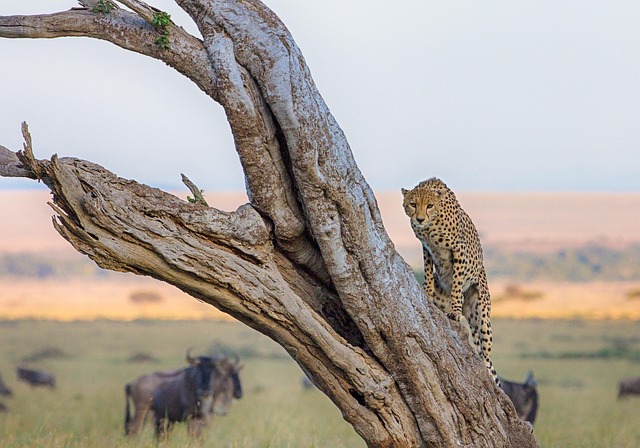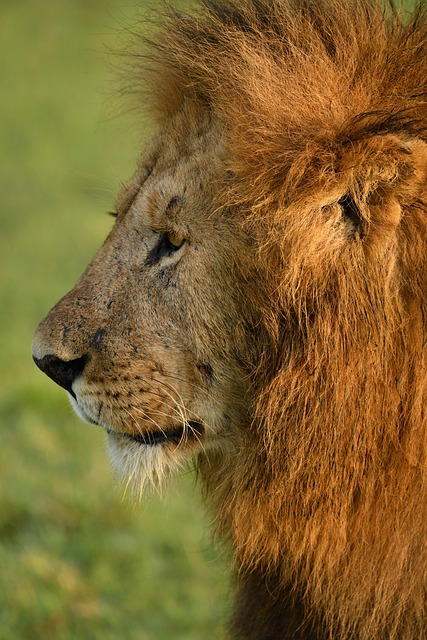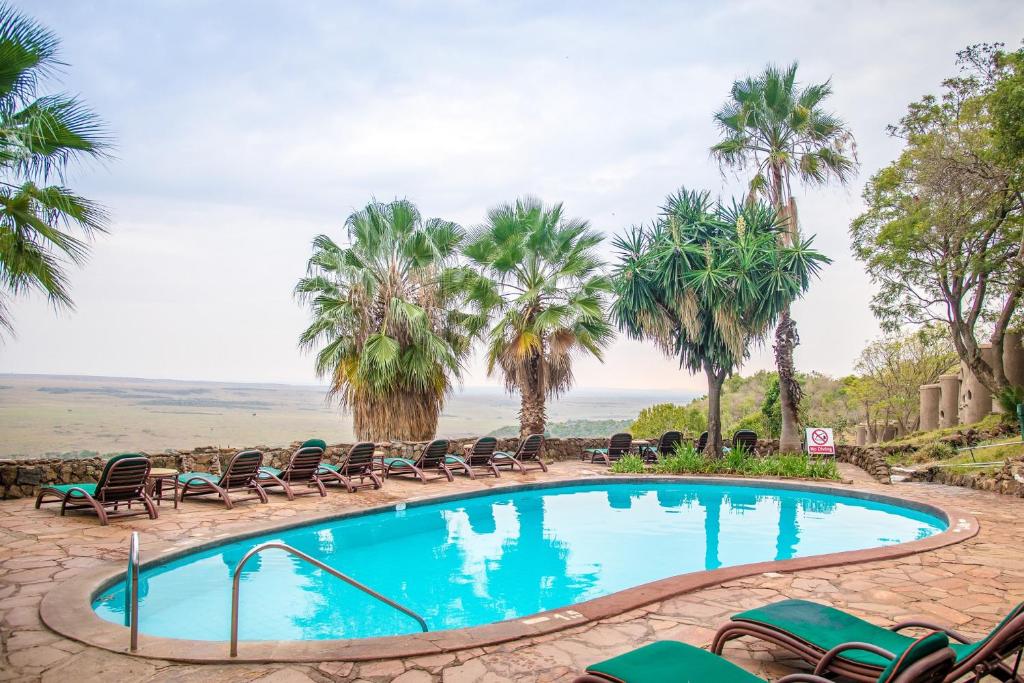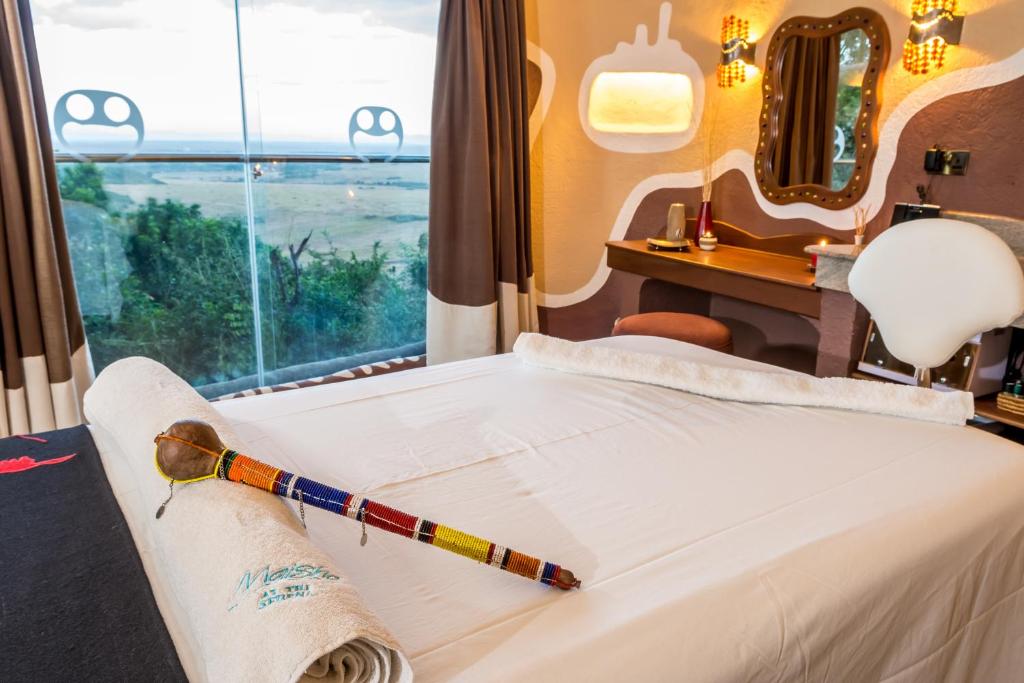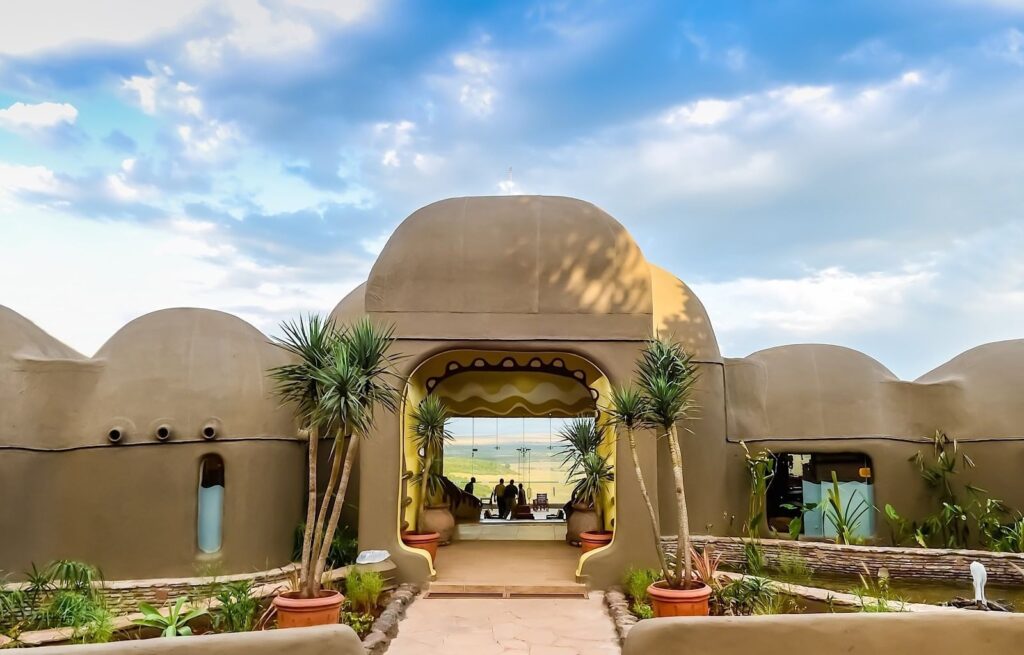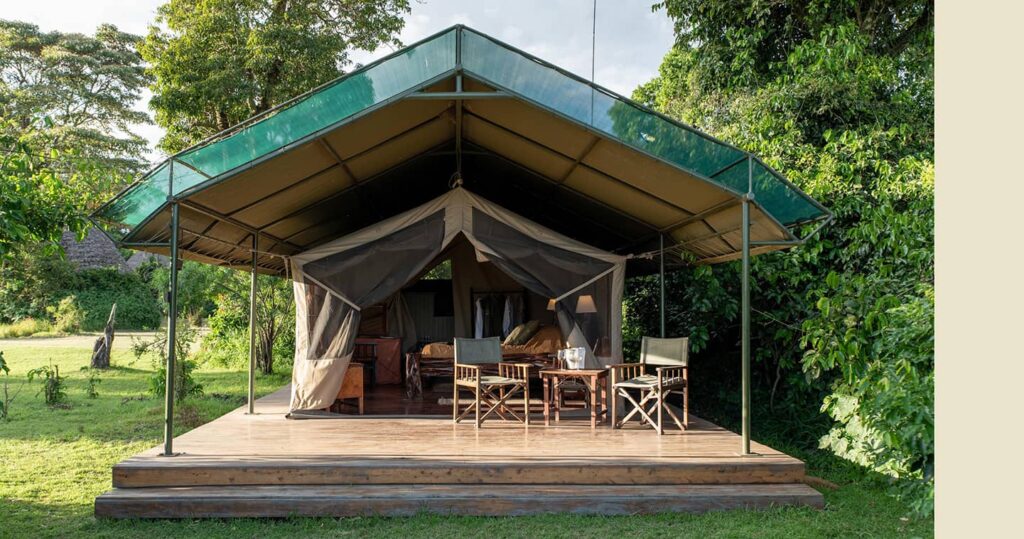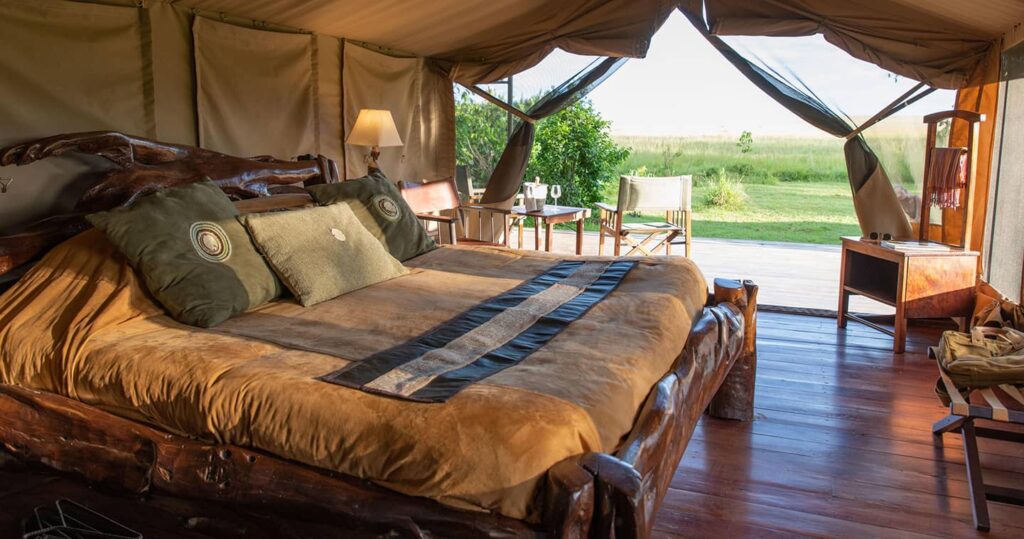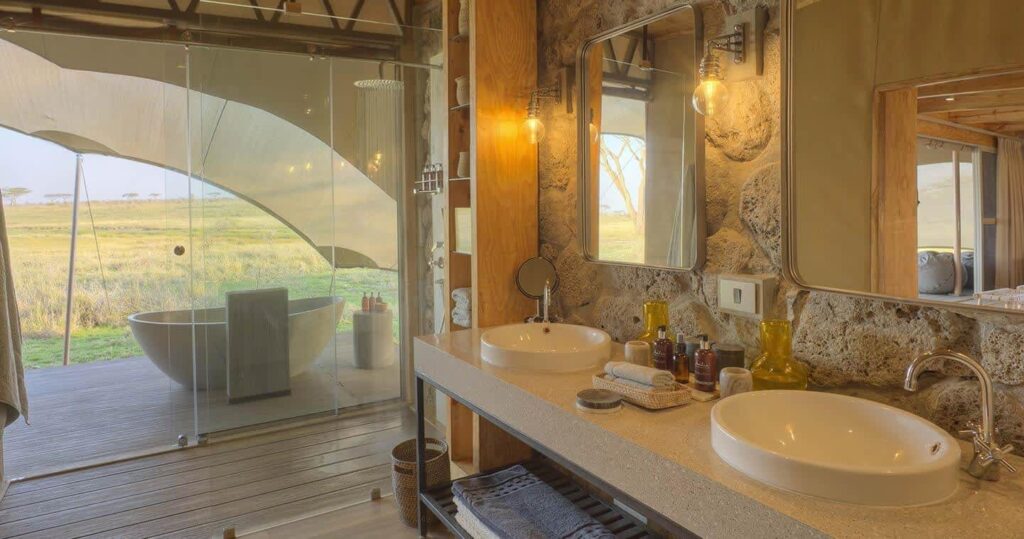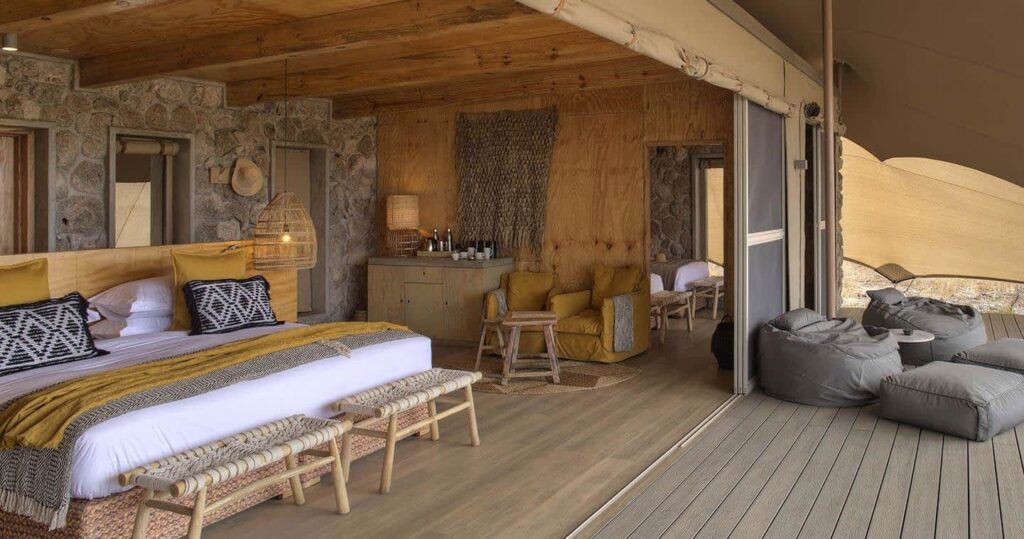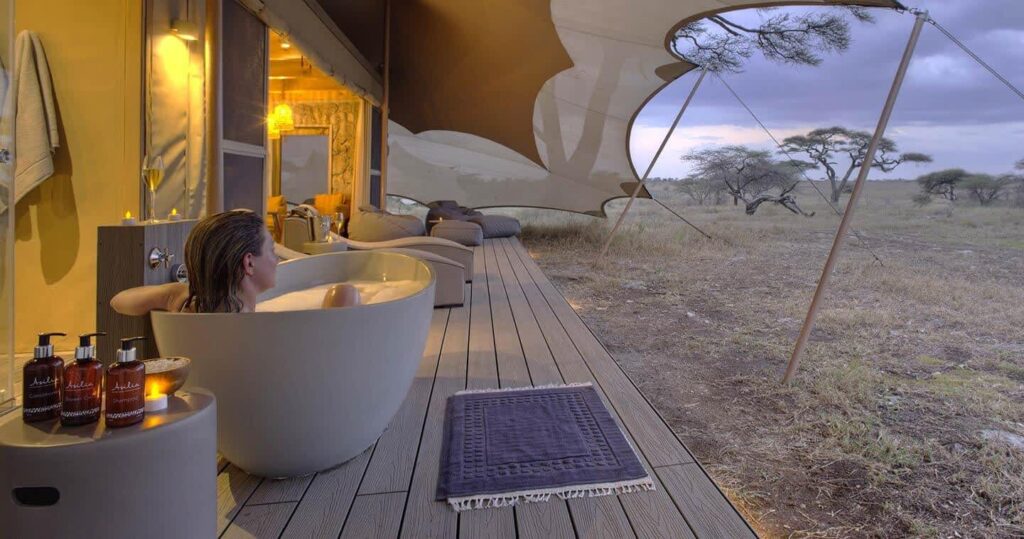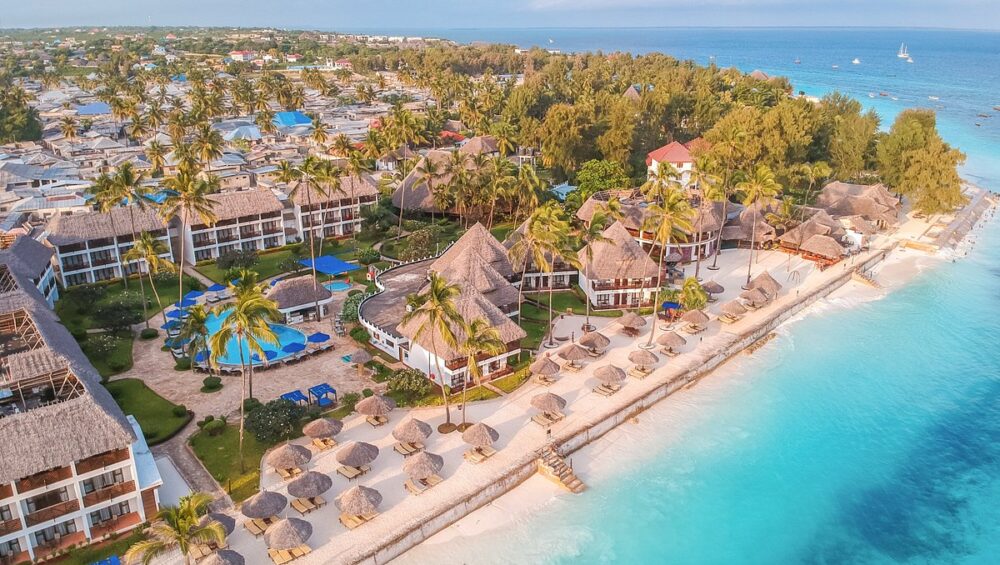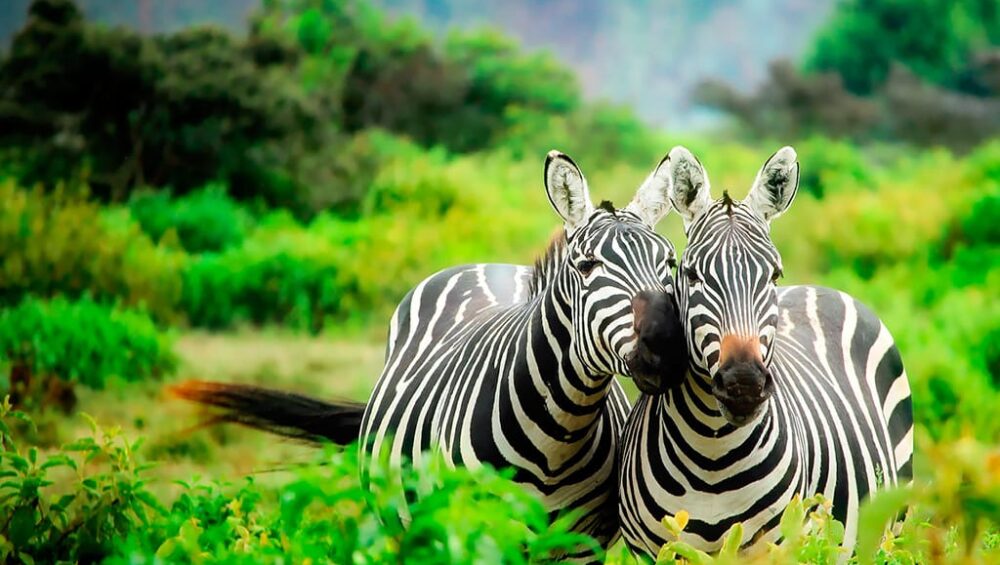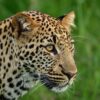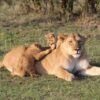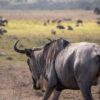How Many Days for a Masai Mara Safari?
Planning a safari to the Masai Mara? This iconic Kenyan reserve offers diverse experiences, from spotting the Big Five to witnessing the Great Migration. The ideal duration of your stay depends on your interests and travel companions. Here’s a guide to help you determine how many days to allocate for various safari experiences.
Spotting the Big Five: 3–5 Days
The Masai Mara is one of the most reliable places in Africa to see the famed “Big Five” — lion, leopard, elephant, buffalo, and rhino. But while it’s possible to see several of these animals in a single game drive, ticking off all five requires time, patience, and a bit of luck. That’s why a minimum of 3 to 5 days is recommended for anyone aiming to complete this classic safari checklist.
Day 1–2: High Probability Sightings – Lions, Elephants, and Buffalo
These three members of the Big Five are the most commonly spotted in the Mara. Lions are particularly abundant, with prides often lounging under acacia trees or hunting at dawn and dusk. The Masai Mara has one of the highest densities of lions in Africa, and your chances of seeing them including interactions like stalking prey or protecting cubs, are very high.
Elephants are another frequent sighting, particularly near the Mara River and forested areas. They are often seen in family groups, including calves, which adds to the excitement for first-time safari-goers.
Buffalo are widespread and can be found in large herds grazing in open grasslands. They’re not as charismatic as big cats, but they are massive, impressive, and surprisingly aggressive when threatened.
With two days of morning and afternoon game drives, it’s very likely that you’ll already check off three of the five.
Day 3–4: The Elusive Leopard
Leopards are solitary and stealthy, making them harder to spot. They tend to rest during the day in trees or thick brush and become more active during twilight. Guides with keen eyes and deep knowledge of the terrain often know where leopards are likely to be found. For example, near the Talek or Olare Orok Rivers, where there are plenty of rocky outcrops and dense bush.
By day three or four, with strategic driving routes and a bit of luck, most visitors will encounter a leopard either lounging in a tree or slinking through tall grass. Patience and silence are key as these cats don’t linger long.
Day 4–5: The Rare and Protected Rhino
The black rhino is the most difficult member of the Big Five to spot in the Mara. They’re critically endangered and prefer seclusion. Most sightings occur in private conservancies adjacent to the main reserve, such as Olare Motorogi, Naboisho, or Mara North, where conservation efforts have helped grow rhino populations.
White rhinos are extremely rare in the Mara ecosystem, and most black rhino sightings are fleeting, with the animals retreating quickly into thickets. Booking your safari with a company that includes access to private conservancies or longer game drives increases your chances.
If seeing all Big Five is a priority, let your guide know from day one. They’ll tailor your drives accordingly, starting with the more common sightings and gradually honing in on the harder-to-find animals.
Why 3–5 Days Is Ideal
- Time = Variety: Animal behavior changes daily. The lion you missed on day one may be lounging on the road on day three.
- Different Light Conditions: Wildlife photography benefits from shooting at dawn, golden hour, and dusk. Each brings out different behaviors and moods.
- Flexibility: A longer stay lets you adapt to weather, animal movement, and unexpected sightings. For example, you might abandon a leopard stakeout if lions are spotted nearby and come back the next day.
- Better Wildlife Interaction: With more time, you’re not just spotting animals, you’re observing their interactions from hunting to mating to parenting.
In short, 3 days gives you a strong shot at four out of five. But 5 days significantly improves your odds of completing the Big Five and doing it with depth, not just as a checklist, but as a full immersion in one of Africa’s richest ecosystems.
Witnessing the Great Migration: 4–6 Days
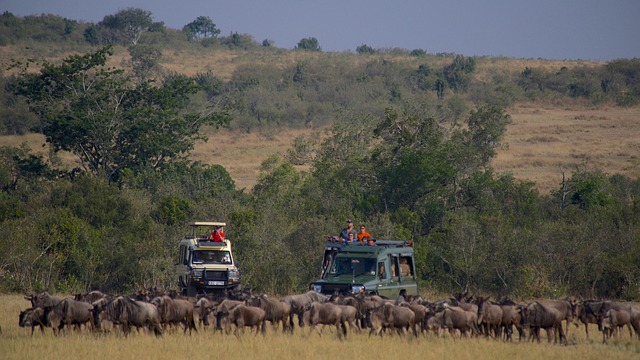
The Great Migration is the most dramatic wildlife event on the African continent. A natural spectacle that has earned the Masai Mara its global fame. Each year, over 1.5 million wildebeest, joined by hundreds of thousands of zebras and gazelles, thunder across the plains in a never-ending search for fresh grazing. If seeing the migration is your main reason for visiting the Mara, plan for at least 4 to 6 days to maximize your chances of witnessing key moments, especially the high-stakes Mara River crossings.
What Exactly Is the Great Migration?
The Great Migration is a continuous, circular movement of wildebeest and other grazers across the Serengeti-Mara ecosystem, driven by rainfall and grazing patterns. The animals follow the rain and the fresh grass it brings in a cycle that starts in Tanzania’s Serengeti and pushes into Kenya’s Masai Mara typically between July and October.
The highlight? The Mara River crossings, where thousands of animals plunge into crocodile-infested waters, facing panic, predators, and drowning all for survival. These moments are raw, emotional, and unforgettable.
Day 1–2: Settling In and Scouting the Herds
On your first two days, your guide will focus on locating the herds. Depending on the month and rainfall, the herds may be massing near the Sand River in the southeast, grazing on the plains near Talek and Ol Kiombo, or queuing nervously at the riverbanks near the Mara or Talek Rivers. Game drives will focus on:
- Tracking the herd movements
- Identifying potential crossing points
- Watching for predator activity, especially lions and cheetahs who trail the herds
At this stage, it’s about getting oriented and developing a feel for the rhythm of the migration.
Day 3–4: River Crossings and Predator Action
By day three or four, the waiting game begins. You may spend hours parked silently at a river crossing, watching wildebeest mill about at the edge, torn between hunger and fear. When they finally move it happens fast. Thousands may pour across the river in chaotic surges.
These are the moments people travel across the world to see. You’ll likely witness:
- Chaotic river crossings
- Crocodile ambushes
- Panicked stampedes
- Lion and hyena attacks on weak or isolated animals
This is where longer stays pay off. Crossings don’t happen on schedule and sometimes you wait all day for nothing. Other times, you’re driving back to camp and a spontaneous crossing erupts. A 4–6 day window improves your chances of being in the right place at the right time.
Day 5–6: Beyond the Crossings – Deeper Migration Experience
After ticking off the iconic crossing moment, there’s still plenty to explore:
- Predator-prey dynamics – With so many prey animals concentrated in one area, predator encounters spike. Watch lion prides, cheetahs, and hyena clans interact with the herds.
- Births and survival – Calves born during the migration struggle to keep up. Watching their daily battle to survive adds depth to your safari.
- Vulture clean-up crews – Carcasses left by predators attract vultures and other scavengers, completing the circle of life.
A deeper dive into these elements gives you context as it’s not just about watching animals run, but understanding the migration as a finely tuned ecosystem at work.
Why 4–6 Days?
- Unpredictable Timing: River crossings don’t follow a timetable. More days = more chances.
- Cover Multiple Areas: Spend time in key river zones (e.g., Lookout Hill, Serena, Mara Triangle) and track the herds as they move.
- Weather Delays: Rain can make roads impassable or change animal behavior. A longer stay gives you a buffer.
- Avoiding Disappointment: It’s possible to visit for 2–3 days and miss a crossing entirely. 4–6 days dramatically improves your odds.
Migration Travel Tips
- When to Go: Late July to September offers the highest chance of witnessing a crossing.
- Where to Stay: Camps near the Mara River (e.g., Mara Serena, Entim, Governor’s Camp) offer quick access to major crossing points.
- Private Conservancies: For a less crowded experience, stay in nearby conservancies and day-trip into the park.
- Photographers: If you’re serious about capturing the migration, lean toward a 6–7 day trip to allow for light variation, angles, and weather changes.
Photographic Safari: 5–7 Days
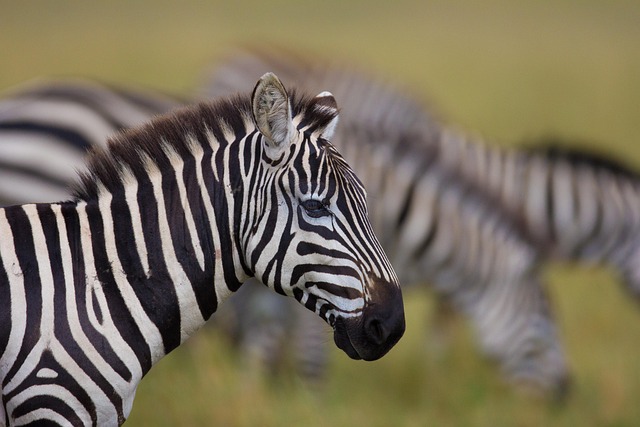
If you’re serious about wildlife photography, the Masai Mara is your dream destination. Its open savannahs, golden light, diverse species, and predator-prey interactions provide a rich canvas for any photographer whether amateur or professional. But to make the most of these opportunities, you need time. Five to seven days is the sweet spot for a successful photographic safari in the Mara.
Why Masai Mara Is Ideal for Photography
- High wildlife density: From lions and cheetahs to elephants, giraffes, and birds of prey, opportunities are everywhere.
- Open terrain: The Mara’s wide-open grasslands make it easier to get unobstructed shots compared to bushier parks.
- Iconic backdrops: Acacia trees, dramatic skies, and endless plains frame your subjects naturally.
- Predictable lighting: With golden-hour sunrises and sunsets nearly every day, the conditions are ideal for shooting.
Day 1–2: Settling In and Scouting Subjects
Your first couple of days are about learning the rhythm of the land:
- Sunlight direction and how it plays across different areas
- Animal hotspots like lion territories, cheetah hunting grounds, and elephant corridors
- Vehicle positioning techniques with your guide for the best angles
It also gives you a chance to experiment with gear like adjusting ISO, using longer lenses, testing stability setups in the vehicle, and figuring out how to work around obstacles like dust, vibration, or movement.
Pro tip: Choose a lodge, camp or tour operator that caters to photographers as they offer custom vehicles with pop-up roofs, bean bags, charging stations, and professional guides who understand light and positioning.
Day 3–5: The Creative Zone
By now, you’re synced with the landscape. You’ve got a few hundred shots under your belt, and you’ve figured out what you want to capture:
- Behavior shots: Mating lions, nursing elephants, or territorial disputes
- Hunting sequences: Cheetahs and lions on the move for this quick shutter speeds are essential
- Portraits: Close-ups of big cats, wrinkled elephants, colorful birds
- Golden hour magic: The early morning and late evening drives are a feast for natural light lovers
You may spend an entire day tracking a specific pride of lions or waiting for a cheetah to make a kill. That’s the luxury of time. Short stays force you to move on quickly. Longer stays allow you to wait and that’s often when the magic happens.
Day 6–7: Filling the Gaps and Revisiting Scenes
By this point, you’ve likely gotten some amazing images, but now you can go deeper:
- Revisit shots you want to improve like better lighting, clearer angle, different behavior
- Look for variety — wide-angle landscapes, silhouettes, small animals like jackals or hyrax
- Try new techniques — slow shutter panning, black and white, or animal-in-habitat compositions
You also have the chance to explore different areas of the reserve or conservancies that offer varied scenery and less crowding which is key if you want to capture more intimate, uninterrupted moments.
Why 5–7 Days?
- Patience pays off: Some of the best shots take hours of waiting and returning again and again.
- Changing light = unique shots: The same animal in the same spot looks totally different at dawn versus dusk.
- Multiple habitats = diverse images: Marshes, rivers, plains, woodlands and covering them takes time.
- Contingency for bad weather: If a day or two is cloudy or rainy, a longer stay ensures you still get optimal light conditions.
Tips for a Successful Photographic Safari
- Bring the right gear: A 100–400mm or 200–600mm zoom lens is ideal; wide-angle for landscapes; fast shutter speed for action.
- Know your camera: You won’t have time to fumble with settings when a cheetah bolts.
- Use burst mode: Moments happen fast especially during hunts or crossings.
- Talk to your guide: Let them know your priorities and they’ll help with vehicle positioning and predicting animal behavior.
Family Safari: 4–6 Days
Planning a safari with kids might sound daunting at first with long drives, wild animals, and remote lodges, but the Masai Mara is surprisingly well-suited for a family-friendly adventure, especially if you stay in the right camp and pace your days carefully. With 4 to 6 days, families can enjoy unforgettable wildlife experiences while keeping things fun, educational, and comfortable for children.
Why the Masai Mara Works for Families
- High wildlife density means you don’t need to drive for hours to see animals.
- Family-oriented lodges offer child-specific programs, babysitting, and kid-friendly meals.
- Private conservancies allow more flexibility like shorter game drives, off-road driving, night safaris, and walking safaris, all without the crowds.
- English-speaking guides are skilled at engaging kids with stories, facts, and games during drives.
In short: You don’t have to compromise. Kids get a safe, enriching experience, and adults get a true safari.
Day 1–2: Easy Wildlife Viewing and Getting Settled
The first two days are about adjusting to the bush while easing into wildlife viewing. Lodges often schedule shorter game drives like 2 to 3 hours max which are tailored to children’s attention spans. You’ll likely see elephants, giraffes, zebras, and even lions early on, which builds excitement without exhaustion.
Some camps offer scavenger hunts or junior ranger programs where kids track animal prints, learn to identify dung, or follow a “bush school” curriculum taught by local Maasai guides.
Back at camp, there’s time to swim, do arts and crafts, or roast marshmallows around the firepit. Safari doesn’t mean skipping comfort.
Day 3–4: Deeper Engagement and Conservation Learning
Now that the family is in the rhythm, you can enjoy slightly longer drives or even a full morning and afternoon with a midday break. Your kids might:
- Watch a cheetah stalk prey
- See a baby elephant learn to use its trunk
- Ask a million questions about warthogs, vultures, and termite mounds
This is also the perfect time to include interactive learning experiences:
- Maasai village visits: Kids can meet Maasai children, learn how to throw a spear, and see how people live in the bush.
- Tracking walks (for older kids): With a ranger, learn to identify prints, spot birds, and understand how animals move and behave.
- Conservation talks: Some lodges offer presentations on anti-poaching, local wildlife projects, and ecosystem health which are great for curious minds.
By day four, many children are confidently identifying animals and teaching parents what they’ve learned.
Day 5–6: Special Activities and Making Memories
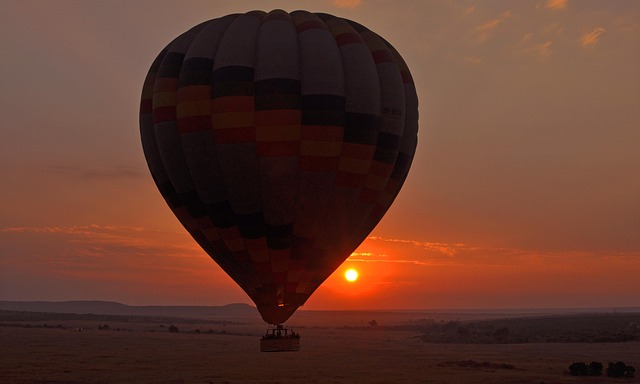
The final days are about rounding out the experience with new angles:
- Balloon Safari (ages 7+): Drift over the plains at sunrise. A gentle, surreal experience that your kids will remember forever.
- Night drives (in conservancies): Spot porcupines, bush babies, hyenas, and other nocturnal creatures.
- Cultural exchanges: Join a beading workshop, hear traditional stories, or dance with Maasai warriors.
These days offer slower starts or longer mid-day rests to keep things balanced. Families often spend the last evening around a fire, sharing favorite animal sightings and planning their next trip back.
Why 4–6 Days?
- Flexible pace: More days mean you can spread out activities and avoid fatigue.
- Better wildlife variety: Kids may not care about ticking off the Big Five as they want fun and surprises. More days mean more wow moments.
- Deeper connections: From guides who become friends to animals kids feel attached to, time builds emotional investment.
Family Safari Tips
- Choose family-friendly camps: Look for ones with family tents, babysitters, and special kids’ meals.
- Go private if possible: A private vehicle allows you to go at your pace with no pressure if the kids get restless.
- Pack smart: Sunscreen, hats, bug spray, coloring books, binoculars, and snacks go a long way.
- Don’t over-schedule: Allow downtime as not every moment needs to be packed with activity.
Honeymoon Safari for Couples: 3–5 Days
For couples seeking a once-in-a-lifetime honeymoon that blends romance, adventure, and luxury, a Masai Mara safari is hard to beat. Imagine waking up to the sound of lions roaring in the distance, enjoying champagne breakfasts in the bush, and watching the sun set over the savannah from your private deck. It’s intimate, wild, and unforgettable. A stay of 3 to 5 days strikes the perfect balance between indulgent relaxation and thrilling experiences.
Why Choose the Masai Mara for a Honeymoon?
- Unmatched romance: Private candlelit dinners, bubble baths with a view, and luxury tents with four-poster beds under the stars.
- Privacy and seclusion: Many lodges offer honeymoon suites or private villas, perfect for alone time without interruptions.
- Bucket-list experiences: Game drives, balloon safaris, sundowners in the bush, all shared with the one you love.
Whether you’re both wildlife enthusiasts or just want to disconnect and be surrounded by nature, the Mara gives you the best of both worlds.
Day 1: Arrival, Relaxation, and First Sunset
On arrival, most couples are welcomed with flowers, drinks, and sometimes a surprise upgrade to a private suite. Your first afternoon may include:
- A light game drive to spot elephants or giraffes
- A private sundowner — drinks and snacks served at a scenic overlook
- A romantic dinner under the stars or by lantern light in your tent
There’s no rush. The pace is set for ease, comfort, and intimacy.
Day 2–3: Shared Adventure and Connection
Once you’ve settled in, it’s time to explore:
- Early morning game drives in the golden light, ideal for spotting big cats and dramatic landscapes
- Breakfast in the bush — a white-tablecloth meal surrounded by nature
- Afternoon siestas, spa treatments, or soaking in a copper tub overlooking the plains
- Evening drives or night drives (in conservancies), followed by fireside drinks and storytelling
What makes this time special is not just the wildlife, but sharing awe-inspiring moments together like your first lion sighting, holding hands as elephants cross the road, or laughing over your guide’s tales around the fire.
Day 4–5: Deeper Connection and Farewell to the Wild
With a few days in the Mara behind you, you can choose how to spend your final moments:
- A hot air balloon safari at dawn, with a champagne breakfast afterward
- A guided walking safari (in certain conservancies), for a slower, more sensory experience
- Visiting a Maasai village for cultural insights and meaningful interactions
These final days are also perfect for slow mornings, journaling, or simply sitting together and watching the savannah stretch endlessly in front of you.
Why 3–5 Days?
- 3 days: Great for couples combining multiple destinations (beach + safari). Enough time for quality game viewing, luxury, and downtime.
- 5 days: Ideal for full immersion so you don’t feel rushed, and you’ll have time for deeper experiences like walking safaris and cultural visits.
Romantic Touches to Look For
- Private decks or plunge pools overlooking the bush
- Massage and wellness treatments in nature
- Surprise bush dinners or “sundowner” set-ups arranged by your camp
- Honeymoon packages: Many camps offer bonuses like free upgrades, bottle of wine, or a balloon safari for newlyweds.
Honeymoon Safari Tips
- Let your lodge know it’s your honeymoon — they’ll often add special extras at no charge.
- Choose adults-only or honeymoon-oriented camps for peace and quiet.
- Combine with a beach escape — after your safari, fly to Diani Beach or Zanzibar for ocean-front romance.
Combining the Masai Mara with Other Safari Destinations: 7–12 Days
The Masai Mara is a spectacular stand-alone safari destination but it’s just one piece of East Africa’s rich wildlife puzzle. Many travelers choose to combine the Mara with other parks to deepen their safari experience, see different ecosystems, and increase their chances of spotting rare wildlife. A multi-destination safari lasting 7 to 12 days gives you the full picture: from the lion-dotted savannahs of Kenya to the elephant herds of Amboseli and the volcanic craters of Tanzania.
Why Combine Safari Destinations?
- Diverse wildlife encounters: Each park has its own stars. For example, you might see rhinos in Lake Nakuru, large tuskers in Amboseli, or chimpanzees in Uganda.
- Varied landscapes: Go from open plains to soda lakes, forests, wetlands, and dramatic mountains.
- Different experiences: Walking safaris, boat rides, mountain hikes, cultural visits as some activities are only offered in specific regions.
This mix breaks up the routine of game drives and keeps the adventure fresh.
Why Choose RealEdge Tours for Your Masai Mara Safari?
RealEdge Tours offers personalized safari experiences tailored to your interests and schedule. With expert guides, comfortable accommodations, and a commitment to sustainable tourism, RealEdge ensures a memorable and responsible adventure in the Masai Mara. Whether you’re a solo traveler, a family, or a couple on honeymoon, RealEdge crafts itineraries that cater to your unique needs, making your safari truly unforgettable.

